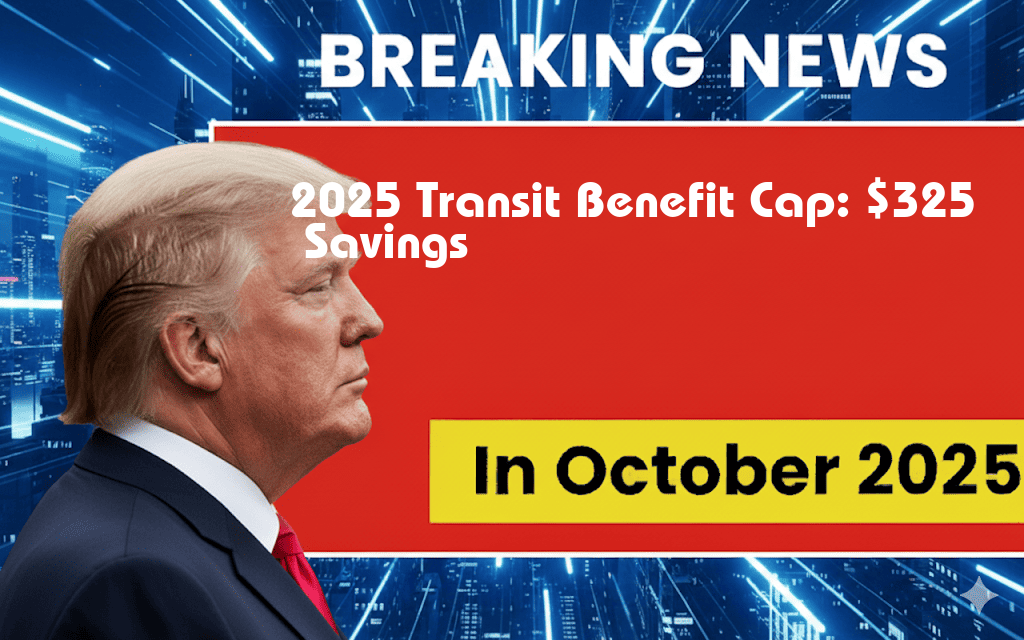As of 2025, the monthly cap for transit benefits has been set at $325, offering commuters an opportunity to significantly reduce their transportation costs. This increase comes as part of ongoing efforts by the federal government to encourage public transit use and ease the financial burden on workers who rely on these services. With the rising costs of living and transportation, the adjustment represents a proactive measure to make commuting more affordable. Employees can take advantage of this benefit through employer-sponsored programs, allowing them to allocate pre-tax income toward transit expenses. The new limit is expected to impact millions of workers across the United States, fostering greater participation in public transportation and possibly contributing to reduced traffic congestion and environmental benefits.
Understanding the Transit Benefit Program
The transit benefit program is designed to support employees who use public transportation to commute to work. By allowing workers to pay for transit passes or tickets using pre-tax dollars, the program effectively lowers taxable income, leading to potential monthly savings for commuters. This initiative aligns with broader sustainability goals and promotes the use of mass transit as a viable alternative to personal vehicles.
The Significance of the $325 Cap
The decision to raise the cap to $325 reflects the increasing costs associated with public transit. In recent years, many cities have seen fare hikes, and the new limit aims to offset these additional expenses for commuters. Here are some key aspects to consider:
- Financial Relief: The increase in the cap allows commuters to save more money each month, which can be particularly beneficial for those who rely heavily on public transportation.
- Tax Savings: By utilizing pre-tax dollars for commuting costs, employees can reduce their overall tax burden, resulting in greater disposable income.
- Encouragement for Public Transit Use: Higher transit benefit caps may lead to increased ridership, which can contribute to less traffic congestion and lower carbon emissions.
How to Utilize the Transit Benefit
Employees interested in taking advantage of the transit benefit should follow these steps:
- Check Eligibility: Confirm with your employer if they offer transit benefits as part of your compensation package.
- Select Your Transit Mode: Choose the type of public transportation that fits your daily commute, whether it’s buses, trains, or subways.
- Enroll in the Program: Sign up for the employer-sponsored transit benefit program to begin using pre-tax dollars for your commuting expenses.
Potential Monthly Savings Breakdown
| Transit Expense | Pre-Tax Cost | Post-Tax Cost (Assuming 25% Tax Rate) | Monthly Savings |
|---|---|---|---|
| Monthly Pass | $325 | $243.75 | $81.25 |
| Monthly Commuter Costs | $250 | $187.50 | $62.50 |
| Monthly Parking Fees | $200 | $150.00 | $50.00 |
Looking Ahead: The Future of Transit Benefits
The increase in the transit benefit cap is part of a broader trend in public transportation policy aimed at encouraging sustainable commuting practices. As urban areas continue to grapple with traffic congestion and environmental challenges, programs like these are crucial. Furthermore, as the workforce evolves and remote work becomes more common, transit benefits remain an important tool for cities to promote public transit usage among employees.
For more information on transit benefits and how they can save you money, you can visit IRS Publication 15-B or check out the Federal Transit Administration for updates on transit initiatives.
Frequently Asked Questions
What is the new transit benefit cap for 2025?
The new transit benefit cap for 2025 has been set at $325 per month, providing significant savings for eligible commuters.
How does the transit benefit program work?
The transit benefit program allows employers to offer pre-tax deductions for commuting costs, helping employees save on their monthly transportation expenses.
Who is eligible for the transit benefit in 2025?
Employees who use public transportation or qualified commuting expenses are generally eligible for the transit benefit, subject to their employer’s participation in the program.
What are the potential savings from the $325 cap?
The savings from the $325 cap can vary based on individual commuting costs, but it can significantly reduce taxable income, leading to lower overall taxes.
How can I apply for the transit benefit through my employer?
To apply for the transit benefit, contact your HR department or benefits administrator, who can provide details on how to enroll and utilize the program.

Leave a Reply